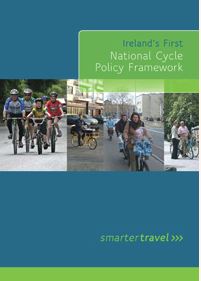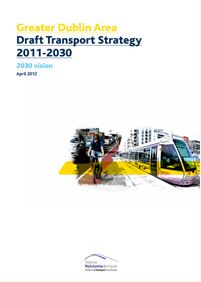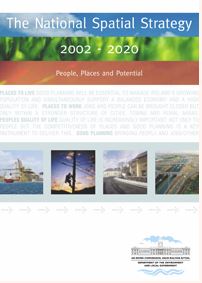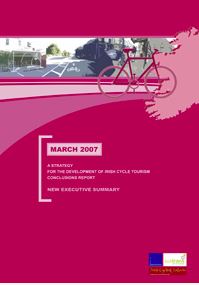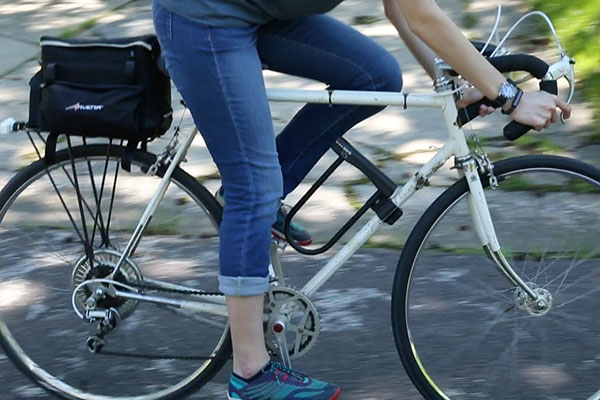Principles Underpinning Development of the Quality Bus Network and Cycling
Under the Government’s Smarter Travel policy there is strong commitment to encourage alternatives to the car, particularly for urban commuting, with very ambitious targets set for modal shift.
The bus is seen as a key player in offering an alternative to the car and the Government commits to a new level of service for buses, including infrastructural improvements. In relation to bus corridors the new policy explicitly states:
“We will implement more radical bus priority and traffic management measures….This may involve making some urban streets car-free, creating tram-like priorities in others and making greater use of roads/hard shoulders by buses”
The same policy seeks to create a culture of cycling in Ireland aiming for significant increases in the levels of cycling in urban areas by 2020 to the extent that in cities such as Dublin, 25% of commutes in 2020 could be by bike. Flowing from this the Government has published a National Cycle Policy Framework to give effect to this ambition. It explicitly deals with networks for urban areas:
“….the design philosophy will be based on the “hierarchy of measures”…with the focus being on the reduction of vehicular speeds…We will ensure that designs are created with the principal aim of preserving cyclist momentum. We will also ensure that designs will provide for a safe passing distance of 1.5 metres between motorised vehicles and bicycles”
To give practical effect to the above approach in urban areas a combination of measures need to be taken not just new approaches in relation to design. One such measure is a reduction in general speed limits to 30km/h.
In summary, in seeking to deliver on the objective of ensuring greater use of public transport, cycling and walking, the Government, particularly in the metropolitan environment, is seeking to pursue complementary strategies in relation to bus and cycling, namely the provision of high quality bus priority and cycling infrastructure.
The purpose of this document is to offer some interim guidance to local authorities and executive agencies/offices tasked with implementing bus priority measures in urban areas so that full cognisance is given to the need to meet the Government’s ambition for cycle provision as well as bus priority in urban areas.
Key Principles

The aim is to create opportunities for the better movement of both bikes and buses in urban areas in accordance with the new Government policy framework for Smarter Travel.
Pending the development of regional or local transport plans and supporting policy guidance, the Department of Transport as funding authority for physical infrastructure for bus priority, requires the following principles to be adhered to:
The Level of Service intended for each part of the Bus Network and the Bicycle Network need to be set down at the planning stage, as this will have significant bearing on the detailed design to follow for each mode.
If the bus and cycle networks overlap on a particular corridor, the design of the bus and cycling spaces should be done in accordance with best practice
Where the provision for cyclists along a section of bus priority space is of a low quality of service, an alternative cycle route in the vicinity of the space should be provided;
Where no alternative cycle route is possible, and a low level of cycling is proposed (or retained) as part of any traffic scheme (Bus priority or any other), clearly stated reasons need to be submitted to the funding authority / agency as part of the application; and
Where the only option is shared road space, the infrastructure should be designed and delivered as being for both modes (and other permitted vehicles) with primacy being given to the safety of cyclists.
Practical Steps to Support These Principles
The Department of Transport (or the relevant delegated funding agency) will require evidence of adherence to the above principles prior to approval of funding of a bus priority route or other road improvement or traffic scheme. In this respect the relevant Officer in the Local Authority should be consulted on options for freeing up road space and his/her report included in the funding proposal for the measure.
Where shared space is being provided the primacy of the safety of cyclists needs to be supported by speed management for bus services and other vehicles, safety training for drivers, and other measures. A prior commitment to such will be required from the bus operators as part of the funding of the scheme.
